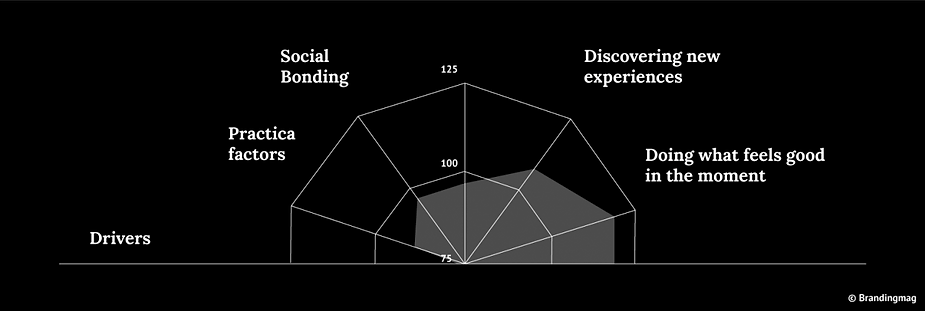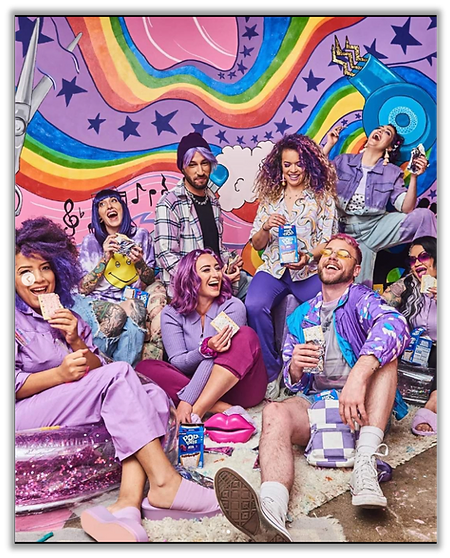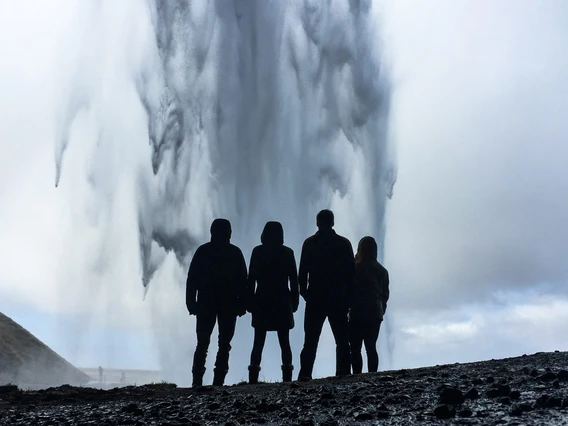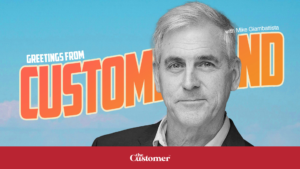This article originally appeared in Branding Mag
This is the third installment in a series which unpacks the psychological profiles that explain consumer behavior. Specifically, the four drivers of behavior, and the five barriers that hinder consumer decision-making. These factors are based on a wealth of neuroscience knowledge from the world of academia, combined with over a decade of application in the brand-building world.
SEE ALSO: Brand Strategy Spoiler: Look for Four Kinds of Psychological Profiles
The ‘Tribal’ driver is an often-misconstrued aspect of consumer behavior. We’ve all heard the adage that human beings are social creatures. And, within a given context, a human being will have one of two reactions to their social group. Simply, they’ll either aspire to be the boss of the group, or they’ll aspire to function more magnanimously as a member of the group in good standing.
Marketing professionals have experienced and observed this, as they’re pretty intuitive human truths. In marketing circles, the role of social influence is usually considered in one of two ways:
Social dominance – this is often referred to using terms like conspicuous consumption, badge value, status seeking, or the like. And while this certainly does play a role in many consumer decisions (stay tuned for my upcoming piece on the Instinctual driver), this is not the focus of today’s discussion.
Social endorsement – this is closer to the core psychological driver I’ll discuss here. We often refer to this as the wisdom-of-the-crowd, or tribal endorsement.
We all know that real-world choices on things like which brand of coffee to purchase happen in an instant, and primarily in the subconscious. When I describe the durable drivers of consumer behavior, what I’m really talking about is the data used in decision making. When a consumer makes a decision, they rely on a particular set of data to guide their choice in the most efficient way possible.
When asked which “data” they use, most consumers cite tangible facts: words, stats, and other rational considerations. We think we behave rationally. However, in real life, the social data is often far more influential. The challenge is, these social considerations are processed in the subconscious and therefore less obvious to a person as the fuel behind their own decisions. That is, the data amassed by social peers through a multiplied quantity of collective experimentation, trial, reflection, and the resulting judgments can actually be the difference-maker in driving real world behavior.
If a person knows that “people like them” have assessed a given brand to be the optimal choice, that “data” can be invaluable in making an efficient, informed decision.
To successfully serve this motivation, brands need to:
Position the brand as a conduit to positive social acceptance and interactions.
Frame the purchaser as the provider of great experiences to others – give them credit.
Focus on social belonging.
This driver can be tricky, as it relies on the brand practitioner to put a good deal of agency into the hands of the consumer. One of the most readily observable examples out in the real-world is referral programs, such as those often used with service-based brands such as wireless carriers and financial service providers.

And while topics like social media are top of the list for many marketing teams, there’s vast potential to get beyond mere incentives for social recommendation by leveraging the root cause – the Why – of tribal endorsement.
Most marketers aspire to deeply understand consumer sentiment as it pertains to everyday purchase decision making; the ways in which various consumers perceive the world around them, and the influence it bears on the things they do or buy.
Likewise, most marketers are especially keen to understand Gen Z – those 18-25-year-olds that are the darlings of most brand aspirations. What’s notable about this coveted generation, however, is the relative lack of this tribal driver. As pricing and inflationary concerns rise, younger consumers are reacting with a continually decreasing social orientation. Rather, in the broadest sense, these young consumers generally reward brands and retailers that provide new discoveries, and serve more impulsive, sensory-forward pursuits.
The compass chart below illustrates the indexes (outside the 100 / index radial line) for the core drivers of behavior. It’s obvious that doing what feels good in the moment, and discovering new experiences far outweigh more rational or social considerations.

This makes sense when you step back and reflect on your personal life, when things get stressful, you just want to get away from the have-to’s of daily life and do what feels good. And while this is certainly instructive in serving the needs of these people out in the world, it also does not mean that tribal pursuits – and the brands that serve them – are rendered irrelevant.
Rather, this instructs marketers on the means by which they can earn tribal endorsement. In categories like food and beverage, refer-a-friend incentives are generally not feasible, nor are they advisable. This is because, in this mindset, the consumer aspires to act as a magnanimous, contributing member of the social tribe. The fear of disingenuously shilling to the tribe for personal gain will actually discourage social endorsement, versus fueling it.
But therein lies the opportunity. Using these insights, brands and retailers can fuel social bonding and tribal endorsement via three primary routes:
Route 1: Focus on us rather than me
Most marketing focuses on the individual – the shopper who will buy your brand, and/or the consumer who will consume it. However, in this mindset, the consumer is thinking about we, not me. Will this be a fun new experience for us to try together? Will we bond around eating this together? Will this provide a relaxing break for all of us to enjoy?
The strategic formula is: New experience + I can introduce to the group = I’ll be a worthy contributor to the tribe.
Route 2: Highlight the experience the brand will empower them to provide their tribe
This is where even more staid, everyday brands can spread their wings. Think about the experience they’ll provide their tribe. Marketers can become fixated on consumer benefits; this pivot lets teams think not about the benefit the brand provides the consumer, but rather the benefit it lets them provide for their tribe. Whether it be family, friends, co-workers, or other social tribes, this subtle shift can make a huge impact in real-life decision making (particularly as many brands ponder the impacts of rising prices).
PopTarts content nailed the high-sensory, experiential angle. Highlighting one of the hipsters as the provider of this fantastical experience would bring it even closer for this tribal mindset.

Route 3: Treat their shopping trip as a mission on behalf of the tribe
Different drivers create different shopping mindsets – some decisions are made right at-shelf, whereas others are made ahead of the actual shopping excursion. The tribal driver compels a more planned, mission style of shopping. Prior to logging-on or walking-into the store, this mindset compels consumers to envision the end experiences they want to provide the tribe – it likely could include more consensus-gathering within this planning, as well (What do you want for dinner this week? Did you like that new soda? Should I buy those bars again? etc.). From there, shopping becomes a matter of a mission to complete. As is the case with the rational driver (discussed in the previous article), they more often shop with a list and use highly verbal attention to find-and-execute their list.
SEE ALSO: Brand Strategy Spoilers: Sometimes Consumer Behavior Is Rational
Spend your marketing calories well ahead of actual shopping and focus on getting on the list. Particularly in eComm, use your activation to empower them with imagined experiences they’ll create with your brand to ensure social acceptance and recognition.
Even if your brand is already oriented towards social factors, remember that it’s not always about compelling social endorsement (or reverting back to the days of net promoter scoring). Rather, marketers can fuel these consumers’ desire to discover new things – and rally their social tribes around them.




